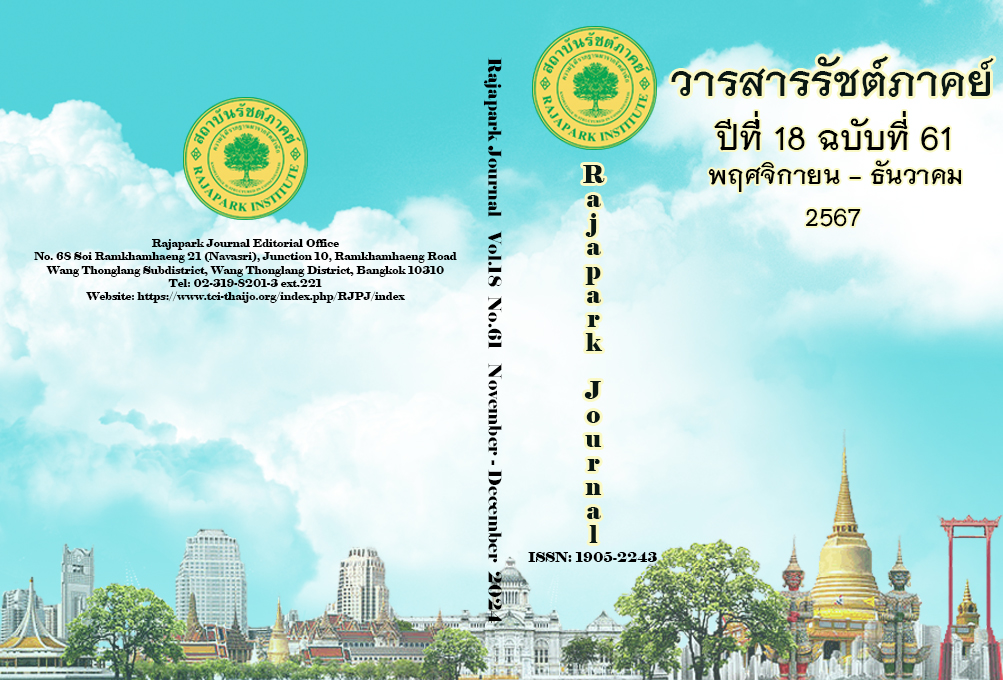The Development of Student Achievement in Learning Media and Toys for Early Childhood Subjects on The Design of Media and Toys According to The STEM Concept of Learning Management Based on The STEM Education Concept Together with The Creative-Based Learning: CBL of Students In The Early Childhood Education Department
Main Article Content
Abstract
The purposes of this research were: 1) to find the effectiveness of the learning management plan based on STEM education concepts combined with creative-based learning, 2) to compare learning achievement in learning media and toys for early childhood before and after receiving learning based on the STEM education concept together with the creative-based learning, 3) to compare the design of media and toys according to the concept of STEM education; 4) to assess student satisfaction with learning management. The sample group used in the experiment was 23 second-year early childhood education students selected using cluster random sampling. The research instruments consisted of 1) a learning management plan based on STEM education concepts combined with creative-based learning, 2) a test to measure learning achievement in media and toys for early childhood, 3) an assessment of the ability to design media and toys according to STEM education concepts, 4) evaluation form for media and toys based on STEM education concepts; 5) satisfaction assessment form. The research results found that: 1) the effectiveness index of the plan is 0.82, and 2) learning achievement scores after studying were significantly higher than before studying at the .05 level. 3) The score of ability to design media and toys, after receiving learning, was higher than before receiving learning. The results of comparing media and toy works show that after the learning process, performance is higher than before. Additionally, student satisfaction with learning management reached the highest level.
Article Details

This work is licensed under a Creative Commons Attribution-NonCommercial-NoDerivatives 4.0 International License.
Views and opinions appearing in the Journal it is the responsibility of the author of the article, and does not constitute the view and responsibility of the editorial team.
References
Boonthanom, C., & Butkatany, A. (2015). Organizing an integrated learning experience for steam education by using literature as a base to develop the creativity of early childhood children. Field of Study: Early Childhood Education Department of Education Faculty of Education Kasetsart University. Journal of Educational Studies Review, 30(3), 191-192. https://so04.tci-thaijo.org/index.php/eduku/article/view/78538
Buesa, N. (2015). Results of learning management according to the concept of STEM Education on academic achievement in biology. Ability to solve problems and satisfaction with learning management for Mathayom 5 students[Master’s thesis, Prince of Songkla University].
Institute for the Promotion of Science and Technology Learning (IPST). (2014). Basic knowledge of STEM Study the 1st level - 4th level. SKSC Printing House, Lat Phrao.
Inthalapaporn, C. (2015). Training curriculum development. To strengthen the ability to organize learning according to STEM education for primary school teachers[Doctoral dissertation, Srinakharinwirot University].
Issarasena, W. Na Ayutthaya. (2016). Things to know about STEAM Education (STEM education). Chulalongkorn University Press.
Kaewdok, P. (2019). Study of academic achievement and creativity in science of Mathayom 4 students using creative teaching as a base: research combining methods[Master’s thesis, Mahasarakham University].
Kearsley, G. (1984). Training and technology: A handbook for HRD professional. Addeson-Wesley.
Maiprasert, D. (2020). A study of teaching and learning using creative teaching techniques as a base in the course Techniques for creating digital interactive media, Faculty of Information Technology. Thepsatri Rajabhat University. Northern Journal, 7(2), 1-7. https://so09.tci-thaijo.org/index.php/AJntc/article/view/1386/626
Mingsiritham, K. (2016). Creative educational media design. Chulalongkorn University.
Office of the National Economic and Social Development Council (NESDC). (2019). National Strategy 2018-2037. National Strategy Secretariat Office, Office of the National Economic and Social Development Board.
Ruechaipanich, W. (2015). Creativity-based teaching. Journal of Learning Innovation, 1(2), 23-37.
Ruechaiphanit, W., & Chimpali, K. (2016). The classroom of the future turns teachers into coaches. SE-EDUCATION.
Ruechaiphanit, W., & Nimitpongkul, W. (2019). Creative teaching, fun learning in the 4.0 era. SE-EDUCATION.
Sittisomboon, M. (2020). STEM learning management (2nd ed.). Faculty of Education, Naresuan University.
Tanawet, S. (2021). The comparison of learning achievement and problem solving thinking of Matthayomsuksa 4 students on the topic of probability between KWDL teaching technique and traditional learning activities[Master’s thesis, Mahasarakham University].
Thongtab, W. (2021). Teaching materials for the subject Media and Toys for Early Childhood. Early Childhood Education Department, Faculty of Education, Nakhon Pathom Rajabhat University.


